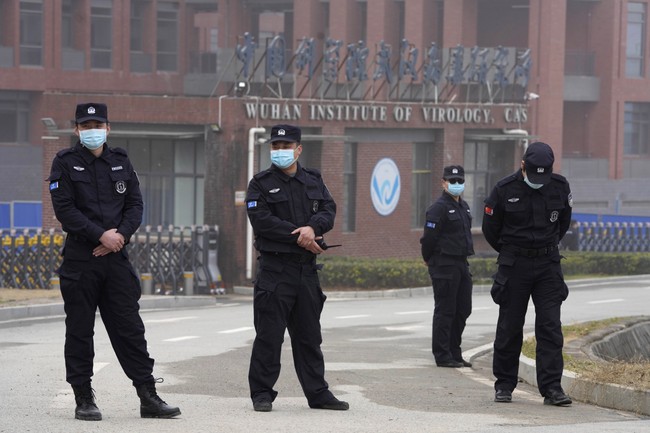Top News
Do Newly Released Documents Provide a Smoking Gun for the Lab Leak Theory?

Nicolas Wade is the former NY Times science writer who has become a major proponent of the lab leak theory. Back in May 2021 he wrote a lengthy post on Medium in which he argued that the lab leak theory was plausible despite efforts to brand it a conspiracy theory. As Wade saw it at the time, the evidence for a lab leak was very strong if not conclusive.
Last month Wade returned with a piece in City Journal arguing that some newly released documents provided further evidence in support of a lab leak. Ed had the story in the headlines at the time. This week the Wall Street Journal published an opinion piece by Wade bringing that new evidence to a wider audience. His argument starts with something called project DEFUSE, an effort to identify dangerous SARS-like viruses which also included plans to manipulate them genetically.
In 2022 three biologists, Valentin Bruttel, Alex Washburne and Antonius VanDongen, guessed that if SARS-CoV-2 had been generated in a lab by a standard method, it would have been assembled from six sections of lab-synthesized DNA with the help of a biological agent called BsmBI. On analyzing the virus’s structure, they found evidence for the seams between sections and other distinctive marks of the assembly process.
Their paper was derided as “kindergarten molecular biology” by the virologists who are favorites of the mainstream press for their opposition to the lab-leak hypothesis. But a batch of documents reveal new details about the DEFUSE proposal and confirm that the three authors were on target. Emily Kopp of U.S. Right to Know obtained the documents through a Freedom of Information Act request from the Interior Department, having noticed that a researcher at the U.S. Geological Survey was a member of the DEFUSE team.
The new documents, which are background planning papers and drafts for the DEFUSE proposal, call for assembling SARS-like viruses from six sections of DNA, and include a cost estimate for purchase of the BsmBI restriction enzyme—exactly as the three authors had inferred. This clearly strengthens, perhaps conclusively, their contention that the virus is synthetic. Richard H. Ebright, a molecular biologist at Rutgers University, says it raises “to the level of a smoking gun” the genetic evidence that the virus was manufactured.
The conformity between the plan to carry out project DEFUSE at the Wuhan Institute of Virology and the virus that caused COVID does seem pretty remarkable but there are two hurdles which critics of this argument point out. First, DARPA never funded DEFUSE and therefore, according to Peter Daszak of the EcoHealth Alliance, that means no such work was ever actually done.
Wade’s counterargument is that just because DARPA didn’t fund the work doesn’t prove conclusively that the work didn’t move ahead in China with other funding. How do we know that China’s military didn’t step in and make it possible for the WIV to pursue the research on its own?
The other hurdle for the lab leak theory is that even if the work had been done in Wuhan, researchers would have needed to start with a bat coronavirus which was very similar to COVID (minus the furin cleavage site added by the lab). But no such virus has turned up. Instead, China has denied any such virus exists and has prevented investigators from looking closely at the viruses collected by the Wuhan Institute of Virology. Still, Wade believes the new information adds up to a very strong case. This is from his previous piece in City Journal:
When SARS2 first appeared in the world, it had all the unique properties that would be expected of a virus made according to the DEFUSE recipe. Instead of slowly evolving the ability to attack human cells, as natural viruses must do when they jump from animals to humans, SARS2 was immediately infectious to people, possibly because it had already been adapted in humanized laboratory mice to the human cell receptor.
SARS2 possesses a furin cleavage site, found in none of the other 871 known members of its viral family, so it cannot have gained such a site through the ordinary evolutionary swaps of genetic material within a family. The DEFUSE proposal called for inserting one. As is now known, the DEFUSE procedure was to assemble the viral genome from six DNA sections, which would account for the even spacing of the restriction enzyme recognition sites in SARS2. Despite intensive search, no precursors for SARS2 have been found in the natural world. Given the 2018 date of the DEFUSE proposal, the researchers in Wuhan could have synthesized the virus by 2019, accounting perfectly for the otherwise unexplained timing of the Covid-19 pandemic as well as its place of origin. It all fits.
There is evidence that the WIV was on the verge of doing exactly the kind of viral research that would make a lab leak possible, exactly when and where the virus later broke out to the rest of the world. It’s an incredible coincidence if it is one. And given China’s history of lying about COVID, not just about the actual death toll but other embarrassing facts, we have no reason to believe their denials.
Read the full article here


















